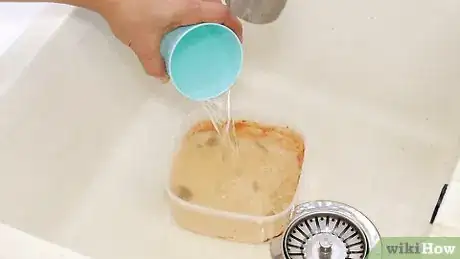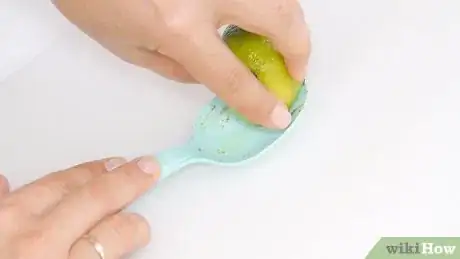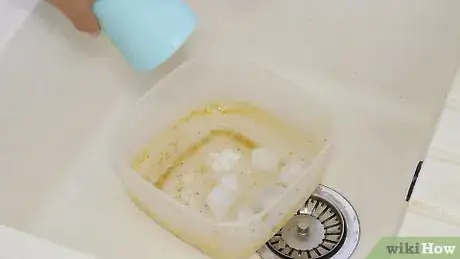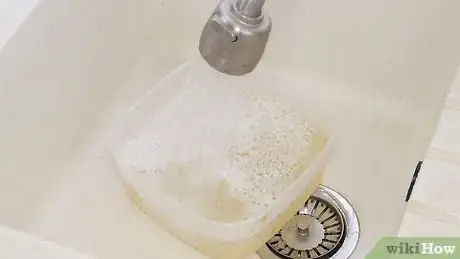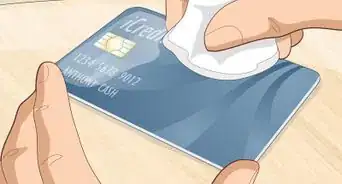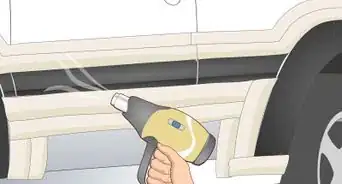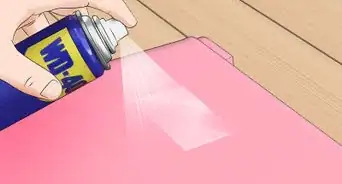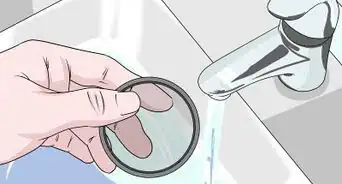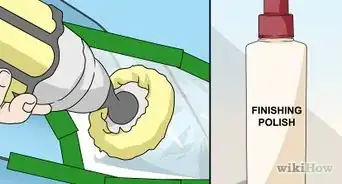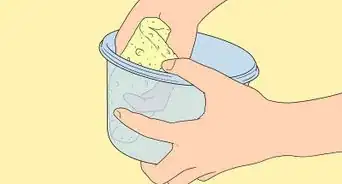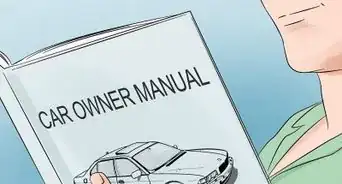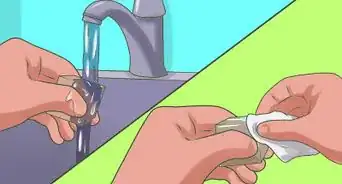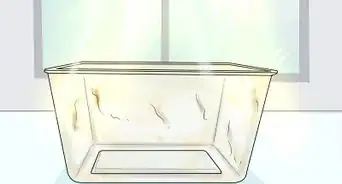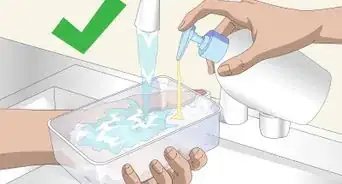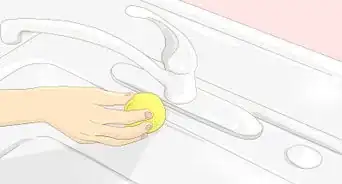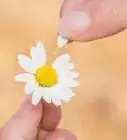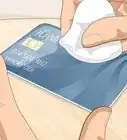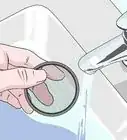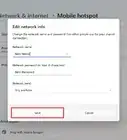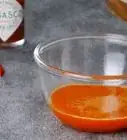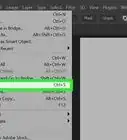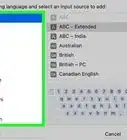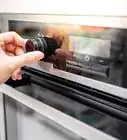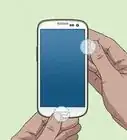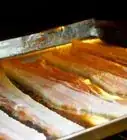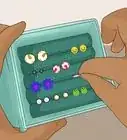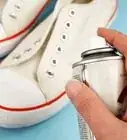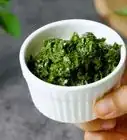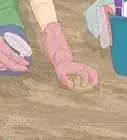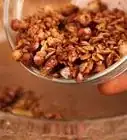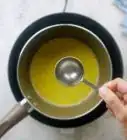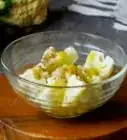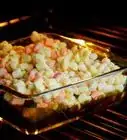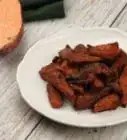This article was co-authored by Susan Stocker and by wikiHow staff writer, Eric McClure. Susan Stocker runs and owns Susan’s Green Cleaning, the #1 Green Cleaning Company in Seattle. She is well known in the region for outstanding customer service protocols — winning the 2017 Better Business Torch Award for Ethics & Integrity —and her energetic support of green cleaning practices.
There are 11 references cited in this article, which can be found at the bottom of the page.
This article has been viewed 90,497 times.
Tomato gets its bright red color from lycopene, a naturally-occurring chemical compound. Unfortunately, lycopene naturally adheres to plastic and stain it. Even after washing out a plastic container, spatula, or measuring cup, the pesky tomato stains can linger behind. Luckily, it’s fairly easy to remove these stains with the right cleaning agent. You can use white vinegar, baking soda, sugar, lemon juice, or hydrogen peroxide depending on the strength of the stain and the ingredients you have available. Since lycopene is found in a variety of fruits, you can also use these methods to clean stains from papayas, pink grapefruit, ketchup, red cabbage, and beets.
Steps
Scrubbing and Soaking Stains
-
1Soak plastic containers in vinegar and water to remove light stains. If you have pesky tomato stains on one of your plastic food-storage containers, the easiest way to clean it is with distilled white vinegar and water. Take your plastic container and fill it halfway with water. Then, fill the remainder of the container with white vinegar. Let the container soak for 12-24 hours. Rinse the container in water when you’re done soaking it to remove your tomato stains.[1]
- If you have a plastic spatula or some other plastic item, you can soak it in a glass filled with 1-part white vinegar and 1-part water.
- This method will work for basically any colored-food stain that remains after standard dishwashing.
-
2Cut a lemon in half and rub it into the plastic to spot clean stains. Take a regular lemon and cut it in half widthwise. Then, set your plastic item down on a plate or cutting board. Grab half of your lemon and hold it with the cut side facing the stain. Rub the cut side into the stained area by scrubbing it back and forth across the stained area. Squeeze the lemon gently as you scrub to release more lemon juice. Continue rubbing for 30-60 seconds. Rinse the stain off with water when you’re done.[2]
- Wear rubber gloves if you have any cuts on your hands or don’t want your fingers to smell like lemon.
- This may work to remove oily tomato residue as well, since lemon juice is fairly good at fighting grease.
Advertisement -
3Scrub tougher tomato stains by hand with vinegar and baking soda. Put on some rubber gloves. Pour 1-2 teaspoons (4-8 grams) of baking soda over your stain based on its size. Then, pour 0.5–1 cup (120–240 mL) of white vinegar on top of the baking soda. The mixture will immediately foam up and expand. Scrub the surface with a stiff-bristled brush or sponge until the stain disappears. Rinse and wash the mixture off when you’re done before hand- or machine-washing the plastic item.[3]
- Baking soda and vinegar react quite quickly with one another. This foaming action creates a lot of bubbles and fizz, so do so near the bottom of your sink to avoid making a mess.
-
4Rub the stain with baking soda and water if the plastic has an odor. Baking soda is a natural deodorizer, which makes it perfect for cleaning stains with a lingering tomato scent. Pour 1-2 teaspoons (4-8 grams) of baking soda over your plastic. Then, add 1–2 tablespoons (15–30 mL) of water. Mix the water and baking soda with a spoon or by hand until it forms a thick paste. Then, rub the baking soda paste into the stain and let it sit for 5-10 minutes. Rinse and wash your plastic container or utensil after the stain is gone.[4]
- Be sure to press hard when you're rubbing the baking soda into the plastic, because you want the paste to penetrate any crevices or pores in the surface of the container.[5]
- If the stain is especially old or pungent, feel free to leave the baking soda paste on the surface of the stain for longer. The longer the baking soda rests, the more efficient the stain removal will be.
-
5Soak extremely tough stains in hydrogen peroxide. If the tomato stains simply won’t come out, step up to a more abrasive cleaning solution. Get a large glass or bowl and set your plastic container or utensil inside. Fill the glass or bowl with hydrogen peroxide until the item is completely submerged. Let it soak for 6-24 hours depending on tough the stain is. After the stain is gone, rinse and wash the plastic item thoroughly. Clean it at least 2-3 times and machine-wash it if you have a dishwasher.[6]
Warning: It’s extremely important that you wash the plastic item thoroughly if you do this. While the other ingredients listed in this section aren’t dangerous, accidentally ingesting hydrogen peroxide can lead to serious health problems.[7] Do not do this if you recently used vinegar to clean your plastic and haven’t thoroughly washed the item. Vinegar and hydrogen peroxide can create a noxious gas.[8]
Cleaning Oily Tomato Residue
-
1Pour 1/5 cup (40 g) of sugar into the plastic container. If you’re using this method on a plastic item that isn’t a container, place your item inside a clean plastic container to do this. If you’re cleaning a container, pour the sugar directly in to the center. Sprinkle the sugar around the center of your plastic item. The sugar will soak the grease up as the other ingredients work to clean the tomato stain.[9]
- The measurements given in this method are designed for a standard 5 by 5 in (13 by 13 cm) food storage container. If your item is really big, double or triple each of the ingredients listed in this method.
- Use regular granulated sugar. Do not use brown or confectionary sugar.
Tip: This is a great choice if you’ve already used some of the other methods and you still have tomato stains with an oily residue. This process uses sugar to absorb the oils from the tomato dish and is much more efficient than standard cleaning procedures when it comes to removing slicker stains.
-
2Squirt 1–2 teaspoons (4.9–9.9 mL) of dish soap over the sugar. Grab a standard, unscented dish soap. Turn the bottle over and squeeze gently to add a small amount of dish soap to the sugar. The amount of soap you use won’t change things too dramatically, but you can measure it out if you’d like.[10]
-
3Add 6 ice cubes to the top of the soap and sugar. Gently drop a half dozen ice cubes into the container. The ice cubes will help to separate the tomato and oil, which will make it easier for the sugar to soak the oil up.[11]
- If you only have accessed to crushed ice or your ice cubs are really small, simply pour a handful in instead.
-
4Fill the rest of your container up with cool tap water. Pour cool tap water gently into your container until you fill it past the stain. If the entire container is stained, fill it up to the rim. If you’re cleaning a utensil inside of the container, fill it with water until the head of the utensil is completely submerged.[12]
- You will notice the water, ice, and sugar begin to bubble up. This is a sign that the process is working.
-
5Let the container sit for 5-10 minutes. The sugar and soap need some time to settle into the plastic and eat away the grease and oil. Wait at least 5 minutes to give the ingredients time to work.[13]
- If you wait too long, the sugar may dissolve entirely and the oils may end up back in the plastic. Don’t let it soak for more than 30 minutes at most.
-
6Empty the container out and wash your plastic as you normally do. Once the stain has been lifted out, pour the ingredients in your container down the drain. Then, hand- or machine-wash the plastic items you cleaned to remove any of the sugary residue.[14]
Warnings
- If you use vinegar, wash your plastic thoroughly before using hydrogen peroxide to remove tomato stains. You’ll create a noxious gas if you accidentally combine these ingredients.[16]⧼thumbs_response⧽
- Wash your plastic thoroughly at least 2-3 times if you use hydrogen peroxide to clean your plastic. If you accidentally ingest some, it will seriously impact your health.[17]⧼thumbs_response⧽
Things You’ll Need
Scrubbing and Soaking Stains
- White vinegar
- Water
- Lemon
- Knife
- Cutting board
- Baking soda
- Hydrogen peroxide
- Rubber gloves
- Sponge
Cleaning Oily Tomato Residue
- Sugar
- Dish soap
- Ice
- Water
References
- ↑ https://www.organicauthority.com/live-grow/clean-stain-removal-from-dishes-and-cups-naturally
- ↑ https://youtu.be/i84vx4gFi38?t=18
- ↑ https://www.organicauthority.com/live-grow/clean-stain-removal-from-dishes-and-cups-naturally
- ↑ https://youtu.be/Extt6FFeIEg?t=25
- ↑ Susan Stocker. Green Cleaning Expert. Expert Interview. 30 Oct 2019.
- ↑ https://www.cooksillustrated.com/how_tos/8614-removing-stains-from-silicone-spatulas
- ↑ https://www.cbsnews.com/news/the-dangers-of-drinking-peroxide-as-a-natural-cure/
- ↑ https://www.goodhousekeeping.com/home/cleaning/tips/a32773/cleaning-products-never-mix/
- ↑ https://961theriver.iheart.com/content/2019-03-26-how-to-get-tomato-stained-plastic-containers-squeaky-clean/
- ↑ https://961theriver.iheart.com/content/2019-03-26-how-to-get-tomato-stained-plastic-containers-squeaky-clean/
- ↑ https://www.dailymail.co.uk/femail/article-6847801/The-incredible-five-step-guide-cleaning-stained-lunch-box-revealed.html
- ↑ https://961theriver.iheart.com/content/2019-03-26-how-to-get-tomato-stained-plastic-containers-squeaky-clean/
- ↑ https://www.thesun.co.uk/fabulous/food/8720946/lunchbox-plastic-stains-minutes-cleaning-hack/
- ↑ https://961theriver.iheart.com/content/2019-03-26-how-to-get-tomato-stained-plastic-containers-squeaky-clean/
- ↑ https://www.goodhousekeeping.com/home/cleaning/a35275/tips-food-storage-containers-stains/
- ↑ https://www.goodhousekeeping.com/home/cleaning/tips/a32773/cleaning-products-never-mix/
- ↑ https://www.cbsnews.com/news/the-dangers-of-drinking-peroxide-as-a-natural-cure/
